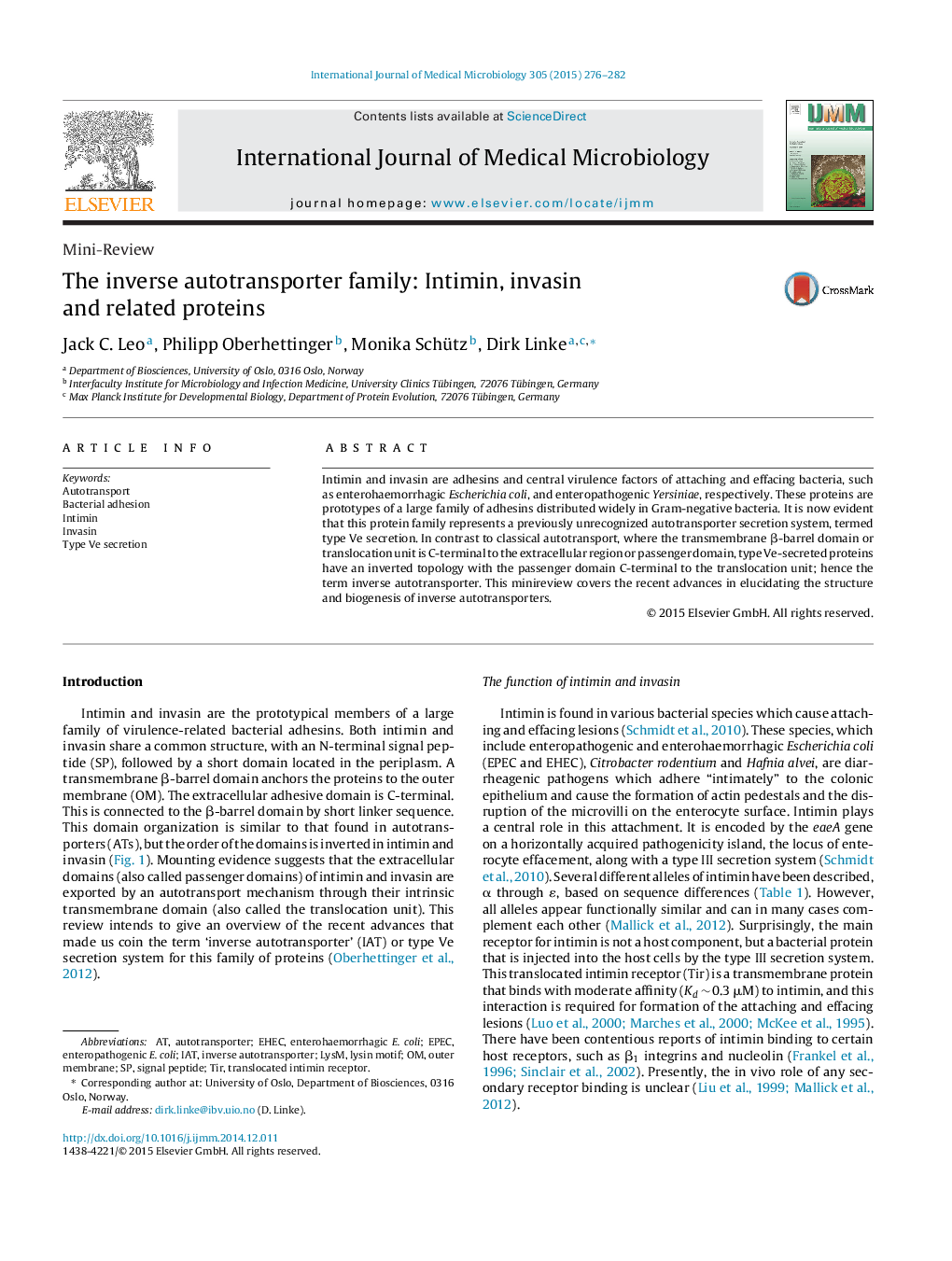| Article ID | Journal | Published Year | Pages | File Type |
|---|---|---|---|---|
| 8385343 | International Journal of Medical Microbiology | 2015 | 7 Pages |
Abstract
Intimin and invasin are adhesins and central virulence factors of attaching and effacing bacteria, such as enterohaemorrhagic Escherichia coli, and enteropathogenic Yersiniae, respectively. These proteins are prototypes of a large family of adhesins distributed widely in Gram-negative bacteria. It is now evident that this protein family represents a previously unrecognized autotransporter secretion system, termed type Ve secretion. In contrast to classical autotransport, where the transmembrane β-barrel domain or translocation unit is C-terminal to the extracellular region or passenger domain, type Ve-secreted proteins have an inverted topology with the passenger domain C-terminal to the translocation unit; hence the term inverse autotransporter. This minireview covers the recent advances in elucidating the structure and biogenesis of inverse autotransporters.
Keywords
Related Topics
Life Sciences
Biochemistry, Genetics and Molecular Biology
Biochemistry, Genetics and Molecular Biology (General)
Authors
Jack C. Leo, Philipp Oberhettinger, Monika Schütz, Dirk Linke,
